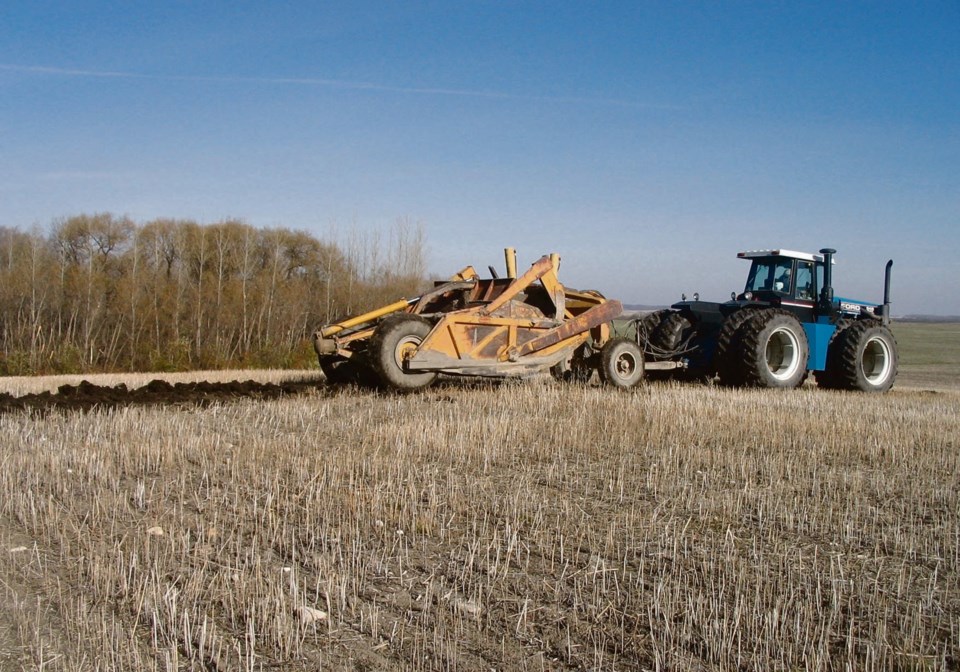LANGHAM — Jeff Schoenau is one of those people who can naturally draw a crowd.
At last month’s Ag in Motion farm show near Langham, Schoenau walked down a set of temporary steps into a soil pit and began speaking about the basics of soil science.
As he began his presentation, visitors at the outdoor farm show were drawn closer to the pit to hear Schoenau talk passionately — and loudly — about organic matter, topsoil and the health of soils in Western Canada.
The University of Saskatchewan soil scientist has obviously done this sort of thing before. He dramatically waved a knife in the air — for digging into the soil — and posed a question to the crowd.
What’s the best way to rebuild the fertility of knolls on a field where the topsoil has been eroded?
“Add manure?” said one of the 45 people surrounding the pit.
Yes, adding organic matter is helpful, Schoenau said.
Or fertilizer? Yes, adding fertilizer is useful.
However, the best method is to move topsoil back onto the hill.
“We had a treatment where we brought back soil … out of the sloughs,” said Schoenau, referring to a field experiment in 2020 in which U of S researchers studied different ways to restore the productivity of eroded knolls.
“The upper level one (for results) was the one where we took that topsoil and laid it back on there.”
Schoenau and his fellow scientists conducted the experiments near Central Butte, Sask. The topsoil replacement produced the “highest spring wheat yield … (due) to better soil fertility and water-holding capacity associated with thicker topsoil,” says a poster summarizing the research.
The findings have been around for a few years and match the results of similar experiments by University of Manitoba researchers.
David Lobb, a U of M soil scientist, has conducted field trials on moving topsoil to the tops of knolls at multiple sites in the northern Plains. The results were dramatic.
“It’s easy to get a yield increase of 40 to 140 per cent because you’re starting at almost zero yield,” Lobb said in 2019 at Ag Days in Brandon.
“In some areas of Manitoba, we find topsoils at the bottom of hills 50 to 100 centimetres thick. There’s a lot of topsoil down there, which has been dragged down by tillage…. Knoll renovation is the most profitable land improvement practice we have, more profitable than drainage and more profitable than irrigation.”
In 2019, Lobb estimated that 10 per cent of Canada’s cropland has moderately to severely eroded soil. The poorer yields on 10 per cent of the land base are costing Canadian farmers about $3.1 billion a year in lost productivity.
Moving soil back to the top of knolls may provide economic benefits for individual farms and for Canadian agriculture, but it is a rare sight on the Prairies.
Some farmers could be doing it, but not many.
“Maybe there hasn’t been enough demonstrations of it,” said Schoenau, speculating why the practice hasn’t caught on across Western Canada.
Another issue could be soil compaction. Heavy equipment would be needed on the field to move the soil from a low spot to the top of the knoll.
“There’s a lot of travel in between (the two locations),” Schoenau said.
Growers likely focus their attention on other opportunities, such as purchasing more land to expand their farm.
However, with farmland prices now at $4,000 to $8,000 per acre on the Prairies, maximizing the production from every acre is critical.
“When you start to think about the price of land and it’s difficult to get … if you want to get the highest productivity out of every acre, some of these reclamation and remediation (projects) start to make sense,” Schoenau said.
Related
​â¶Ä‹â¶Ä‹â¶Ä‹â¶Ä‹â¶Ä‹â¶Ä‹About the Author




